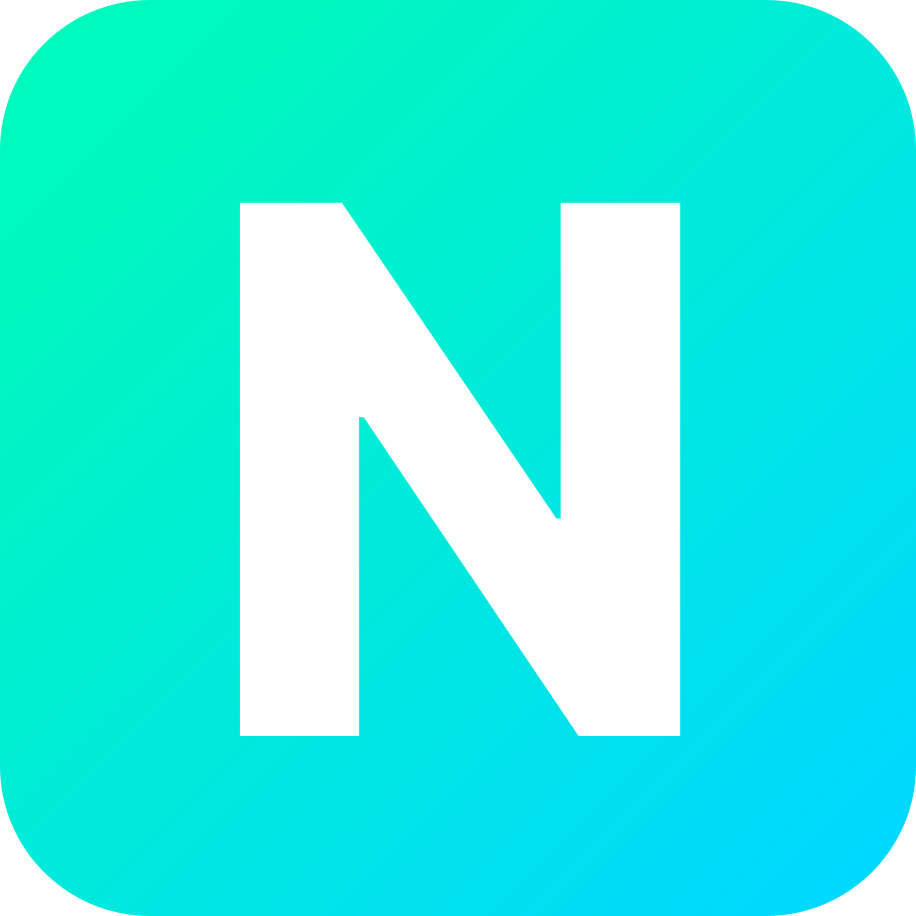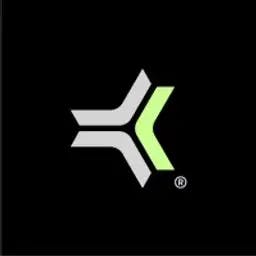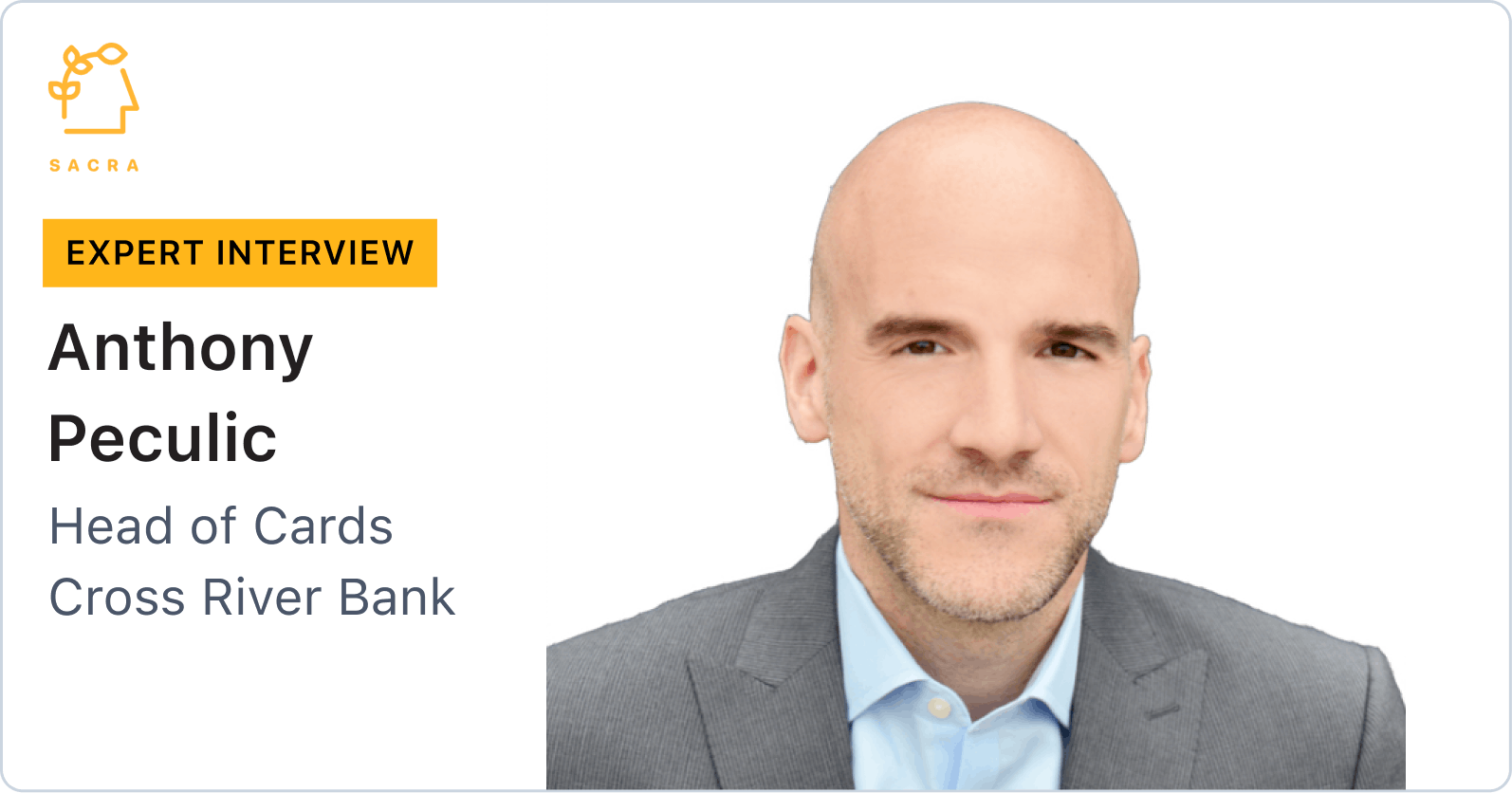Farooq Malik and Charles Naut, co-founders of Rain, on stablecoin-backed credit cards
 Jan-Erik Asplund
Jan-Erik Asplund

Background
Farooq Malik and Charles Naut are the co-founders of Rain. We talked to Farooq and Charles to learn more about how businesses are using stablecoins for payments today, the problem of interoperability between crypto and fiat payment systems, and the kind of payments infrastructure needed to unlock stablecoins as a mainstream payment method in the next 5-10 years.
Questions
- What is Rain in short and what inspired you guys to build it?
- Can you talk about your initial product market fit, what your early customers look like and how you reached them? Then, I don't know if there's any early milestones you want to share or you can share, but I'd love to hear any of those.
- It’s interesting, the banking crisis is associated with “crypto as contagion” and a lot of crypto companies or crypto-adjacent companies failing. But I didn't think about, at the same time, the ones that are continuing to exist moving their assets from the Tradfi format back into self custodial.
- At any given moment, in terms of customer mix, there was like a ‘hey, DAOs are now a big thing,’ and ‘now it's DeFi protocols,’ then obviously, NFTs were big at one time. You talked about how some of your initial customers were DAOs, what is the customer mix? How has that evolved over time and what does it look like today?
- That's a great call-out and I want to come back and talk about that more. But maybe as a little bit of foundation setting, you mentioned Ramp and Brex. For people who are familiar with those products, can you compare and contrast the customer experience, how it works, the use cases and all that?
- In the future, maybe a Ramp would integrate with Rain to power bill pay so that it could be agnostic to digital versus fiat money?
- Can you talk about what digital assets Rain does work with today? Also, how you chose the ones you started with, and is adding more coverage incrementally expanding your TAM?
- When a Web3 project gets started today, what does that look like? You mentioned this multi-party structure, are companies still creating non-profits in Switzerland with a for-profit arm? Like the foundation plus the company that then gets paid to build the product? How does the structure look today?
- Can you talk about then—we've raised some money, we have our corporate entities set up, how do we set up our treasury? Do we convert some of that to fiat or not? Treasury, obviously, became a hot topic too during the SVB thing. How does your customer think about treasury?
- What's the advantage of using Rain with USDC versus using a traditional card with fiat if I'm already converting part of it into fiat? Then, do folks use a combination, like Amex plus Rain, and how does that use case get divided? When would I use one versus the other?
- One of the things that a lot of what you're talking about brings to mind is a company like Deel that started and focused on this international contractor payments use case—which is really valuable for these sorts of globally distributed companies—and then has a trajectory now from global payroll into domestic payroll. They want to first use Deel side by side with Gusto, and then now you just use Deel (in some hypothetical sense). Is that part of the trajectory that you're describing, and that trajectory being driven by an initially hybrid adoption of stablecoins, and then maybe a mainstreaming of stablecoins happens?
- That spawned two questions in my head. One is, why choose corporate card or expense management as the wedge versus payroll or bill pay even? And then related to that, is the volume breakdown then a lot of in-person purchases? Because in my head I’m always thinking, virtual cards and e-comm, but is it actually adoption driven by going to the coffee shop, as you say, and paying with your card, a physical card?
- Can you talk about Rain's infrastructure, maybe key partners along with banking and cards partnerships? I was talking to someone about Rain and he was like ‘how did they have a banking partner?’ To the extent that you guys could talk about it, I’m curious to know what the infrastructure looks like, and all that stuff.
- Can you talk about the noncustodial element? Is that a big selling point for customers? How do you talk about the flow of funds or risk of working with Rain when you're talking with customers about why they can trust you and why they should feel comfortable running their finance and payments through Rain?
- If I'm a new customer and I start, what do I do? There's a smart contract, I send my USDC there and then you get the card, I spend it. Can you walk me through that real quick? It is pretty basic, but that would actually be helpful.
- Business model-wise, obviously Ramp, Brex, they've started with interchange and then moved towards SaaS or layered on SaaS on top of that. One of the benefits of using USDC and stablecoin—the crypto rails—is that the fees are a lot lower. Do you guys take a cut of transactions? How are you thinking about the business model and all that?
- If everything goes right for Rain over the next five years, what does it become? How has the world changed as a result?
Interview
What is Rain in short and what inspired you guys to build it?
Charles: Farooq and I met through the On-Deck Founder Fellowship in 2021 and connected on some shared interests. Farooq had this domain, signandwire.com—he's one of those domain hoarders, he has tons of them—and he wanted to do something with it. So we started working on a side project. I was in between things and looking to have small micro-SaaS apps that I could build out. The idea behind Sign and Wire was pretty simple. It is one place where you can go and get all your fundraising documents generated, and they're payment-enabled, so you can send them to your investors, and they can go sign them and wire the money from one place. Really simple.
We built it out over a couple of weeks, and tested it with our friends who were fundraising. The early feedback was they loved the experience, but the payment part was the painful part. It was really slow. We were built on ACH rails through an enablement partner and there were two hops for all the funds. It would take more than a week for the money to get to the startup that was fundraising. They wouldn't even know where it was in the process, or how much longer it was going to take. At that time—this was summer of 2021—more and more of the conversations between Farooq and I were about DeFi and stablecoins. We got really interested in stablecoins, and saw that they might be able to solve some of the problems that we were having really well.
That's when we started adding stablecoins as an actual rail within Sign and Wire to do investments. Through that, it got us more into the crypto space, talking to crypto-native teams who had fundraised either in stablecoins or in other assets. A big problem that we learned about from interacting with stablecoins and the teams that were using them was the lack of interoperability between the crypto rails and the traditional financial rails. Even though some of the teams we talked to had raised hundreds of millions of dollars, they were still struggling to open up a bank account or pay for a MacBook or their AWS bill, things that are important for any business, whether they're crypto-native or not.
So in the winter of 2021, we decided to work on Rain to solve that lack of interoperability between what we saw as being the future of finance and what we saw as the current reality of finance.
Farooq: I think Charles did a great job. A lot of it was just realizing that we had this technology, which was enabling this instant use case between a peer-to-peer transfer—like an investor and a startup founder or a startup company—and how meaningfully different it was from that ACH experience that we'd unlocked. It was so much better than even other experiences that we both had as founders that had raised money. In some cases, I had multiple investors that invested the same amount of money, and I would receive five wires and I’d have no idea whose money I already had. It was these things, these micro-challenges and micro-frictions that we’d experienced personally and realized ‘oh, wow, stablecoins and digital money is probably a use case, which is going to be here for a while, because this is as bad as it's going to be.’ It's only going to get better. It's already better than the best that we already had.
Charles: There was an experience that happened actually pretty early on that really solidified this for us as that ‘okay, this is going to be the future.’ It was Christmas eve of 2021, and we got a DM from Balaji Srinivasan, who was the CTO of Coinbase and pretty popular on crypto Twitter. He’d found out about Sign and Wire and he was writing this piece on mirrortables and putting cap tables on the blockchain. He was excited about what we were doing and he wanted to invest, but Christmas eve that year was on a Friday, so the banks were closed. Then the next day was a Saturday, then it was Sunday, and then I think Monday the banks were also closed. So if he was using wire, we wouldn't even get the money until Tuesday or Wednesday the following week. But he went onto our product, Sign and Wire at the time, and just sent USDC to our wallet.
At the time, we had already started to work on Rain and the interoperability layer, so we were able to start spending it the second that we got it. Which was like, ‘okay, this is actually way better than the experience that is currently possible on the existing rails.’ That's when we really had conviction on what we were doing.
Can you talk about your initial product market fit, what your early customers look like and how you reached them? Then, I don't know if there's any early milestones you want to share or you can share, but I'd love to hear any of those.
Farooq: A lot of it was just early in customer discovery conversations we had, as we were learning about this problem that people had with stablecoins and other crypto assets. We thought there was no way that this was a real problem. We were like ‘but exchanges exist. How do people have this issue?’ We did some initial user interviews, and pretty quickly people were like, ‘oh, if you can build something like this, please, can we have it? I need this right now.’ Because we were sharing with them, ‘hey, if we gave you a card that'll let you spend your assets that you've raised, without having to go through a bank on exchange, would that be useful for you?’ And they said, ‘where can we sign up? How much money do you want? How quickly can we get it?’
Once we heard that five or six times, we were like, ‘oh, maybe this is actually a thing.’ That's also how we found the first couple of customers. They just kept badgering us after a couple of weeks, like ‘hey, is this live yet? Are you able to do this yet? When do you think we'll be able to sign up?’ That's when we knew that there was an opportunity and a problem to solve. Those were the early indications of product market fit.
But then as we were building this, a little bit over a year in, the banking crisis happened with places like SVB, Silvergate, and Signature, and there was a lot of contagion as a fallout of various different things like interest rates, then FTX and all these other things that were happening in the space. As a lot of those banks failed, or wound down, or otherwise exited the market, the few options that people had in an industry—which is a software business, most people in this industry are software developers and people are selling software services or developing blockchain or software technology—a lot of those folks just ended up not being able to access even regular bank accounts. It wasn't even a matter of, ‘oh, I now have on-chain assets and I can't make this talk to my off-chain assets.’ A lot of these folks now were like ‘well, I don't have anywhere to put my off-chain assets, so I'm trying to bring these back on-chain.’
That's when we started realizing that without regulatory certainty, it's going to be a pretty tough slog for people in this industry. The demand for additional services, and additional interoperability, and more utility for self-custodial balances is going to become more important. The other thing that we realized, as we were looking through this and listening to clients and potential clients and other folks in the space, was that there was this crisis around FDIC insurance. A lot of that was driven by the fact that you're not holding onto your own money.
Many businesses were like, ‘oh, how do we custody as many of our funds as possible ourselves so that it's on our balance sheet rather than on the balance sheet of a bank that might become stressed or might fail or something like that.’ That's when we started getting even more inbound, at that point, from folks that had even more resources. They had really great relationships with banks, because they had even more money than the people we'd serviced already, and they were truly more enterprise-driven and needed a lot of other things as well.
That's when we realized, ‘hey, we're really on track to have a significant customer base that has substantial needs. They have international entities, they have a multi-party structure, and they typically would be buying a very high-end solution in this space. But all of the cards in the market require you to have a bank account to pay your billing, except for us.’
It’s interesting, the banking crisis is associated with “crypto as contagion” and a lot of crypto companies or crypto-adjacent companies failing. But I didn't think about, at the same time, the ones that are continuing to exist moving their assets from the Tradfi format back into self custodial.
Farooq: We saw that happening quite a bit and companies continued raising more rounds. The other thing that happened at the same time is a lot of folks that we were servicing, even though it was the beginning of the bear market, they still had substantial revenue. They were running nodes on chain, they were staking ether, and all sorts of other things. They were generating millions of dollars, and in some cases, millions of dollars a week in on-chain revenue, which was now effectively permanently stuck on the blockchain.
At any given moment, in terms of customer mix, there was like a ‘hey, DAOs are now a big thing,’ and ‘now it's DeFi protocols,’ then obviously, NFTs were big at one time. You talked about how some of your initial customers were DAOs, what is the customer mix? How has that evolved over time and what does it look like today?
Farooq: We originally started with the idea that the long tail was going to be significant. Because there's been excellent businesses and excellent go-to-market strategies executed by the folks at Brex and the folks at Ramp. We thought, ‘hey, this is a market where a lot of the people in it, and the long tail can't actually use Brex or Ramp. So if we follow a similar strategy, we'll be able to have some similar success.’ What we realized was the smallest teams actually had the lowest amount of crypto exposure. They had raised traditional rounds from traditional investors in dollars in a bank account, and the people that actually had more demand for our product, and had the bigger problem, were people that were in the middle. Those folks had on-chain revenue—it was NFT marketplaces or projects or protocols or other products that are generating transaction revenue or fee revenue on-chain.
That's essentially how we started switching our focus mostly to folks that had more money. The benefit of having folks that have more money, is that they all use the same accounting firms, and they all use the same legal advisors. We were able to start building relationships and trust within the community that way. That's where most of our focus converged over a period of time.
Charles: There’s this saying that the future is here, it's just not evenly distributed. That's what we saw, crypto native teams being really early adopters to stablecoins, but we're starting to see, globally, a lot of other use cases and demand for stablecoins, not just from businesses but consumers in a lot of emerging markets. So slowly, we're increasing that target market to not just be that original ICP, but for people all over. You'll see more of that in the future from us.
That's a great call-out and I want to come back and talk about that more. But maybe as a little bit of foundation setting, you mentioned Ramp and Brex. For people who are familiar with those products, can you compare and contrast the customer experience, how it works, the use cases and all that?
Farooq: Yes, so the ethos of what they're trying to build, from the ground up, is very different from what we're trying to build. If you were to look at Brex and Ramp, they're really going after the CFO function, and they use cards as a wedge into CFO teams. It’s the ability for a company to understand where their money goes, understand what their employees are spending money on, and then helping those companies and those people and those departments understand, ‘hey, we have all of these other activities that take place,’ and it's right for Brex or Ramp to come in and say, ‘hey, let's take accounts payable, let's take accounts receivable maybe, let's take travel, let's take all these other things.’ That's been a successful strategy for them.
For us, our ethos here has been on making a different bet. We're making a very different bet than CFO teams and digital asset companies that are going to be similar to regular companies. That's not really the bet that we're making. We're making the bet that digital money is going to require the rebuilding of a brand new infrastructure that doesn't yet exist. So accounts payable uses ACH or Swift or SEPA or whatever it is, or Fedwire or FedNow. Digital money uses rails that haven't been really battle-tested or built to be interoperable with all of those different rails. Our thesis is really around ‘how do we build all the tooling and all the infrastructure to provide the user experience of a product as good as Brex or Ramp, but how do we build all the underlying infrastructure and all the tooling to let anybody build those use cases?’ That's really a big piece of what we’re building.
We started with this customer segment because it gave us a couple of things that very few people get: a captive audience that has the problem, high intent to transact, and a large monetizable asset base that already was in digital money. Our users already have future money, but their life today is reliant on legacy fiat rails. How do we make future money operate in a future mechanism so that we can drive more value from the present money rails into a digital money rails?
In the future, maybe a Ramp would integrate with Rain to power bill pay so that it could be agnostic to digital versus fiat money?
Farooq: Ultimately, businesses in the future, at some point, are going to want to pay instantly and get paid instantly. And they're going to want to be able to pay one vendor who can then, in that payment, pay a different vendor through programmable money or make multiple payments to lots of different people at one time. All of that stuff doesn't really exist in the present day money format today.
Charles: I think you'll see Rain over time, fade more and more into the background and start powering some of these things. We built the product because we had to, because that was the way to solve the problems that our initial customers had. But as you expand that customer profile, we built this infrastructure that we think can solve a lot of other problems as well. And we're willing to partner with anyone to enable that.
Can you talk about what digital assets Rain does work with today? Also, how you chose the ones you started with, and is adding more coverage incrementally expanding your TAM?
Farooq: Yes, absolutely. We started working with USDC because it was issued by a domestic regulated institution here in the United States. It was issued by a company that had publicly audited proof of reserves, etc, and that's where we started. Since then, we've added support for other tokens that have similar attributes, or tokens such as PYUSD, which is PayPal's token. We support a couple of other emerging tokens like USDGLO, which is a philanthropic effort focused on redirecting the earnings of the reserves towards charitable functions like poverty alleviation.
We're pretty agnostic in terms of how and who we work with. It's really based on the criteria of working with people that are reputable and that have audited proof of reserves so our customers know they're getting a product which is fully backed. It also helps us avoid some of the challenges of floating rate tokens, because how do you mark that to market, how do you report those for clients that are running a very complex global operation from a tax perspective? We actually designed this to be the lowest lift from the accounting and reconciliation side of things as possible, primarily because our clients do have floating rate tokens, but their finance team is as conservative, in some cases, as a traditional business' finance team. They don't want to have to deal with the floating risk token and marking it to market, and then having various different entities dealing with lots of different capital gains, reporting liabilities, etc.
We found a lot of success early on by just engaging with our customers and saying ‘hey, do you really want to pay your bill in Ether or Bitcoin, or would you rather just know the amount of dollars that you owe somebody and then just deal with it in a dollarized term?’ Then longer term, to answer your second question about how do we increase the TAM, again, our thesis is around the digitization of money. If you look around the world, at least two-thirds, if not more, of central banks globally are exploring some form of digital money issuance. Whether it's a CBDC, or it's a regulated stablecoin issued by financial institutions or banks, people globally are thinking about ‘how do we do this?’
In the medium term, we believe that countries will launch those efforts, and then they'll be similar to how FX works. All these different countries have lots of different currencies. We think about these things as all different currencies. It may be the case that, down the line, American businesses will launch their own version of stablecoins, as we've seen PayPal do. Maybe we'll see other folks like Target launch one, or Walmart, or some other similar company. Our goal here is: How do we become the interoperability layer between all of those different tokens? Because, the real use of money is either saving it or spending it. That's really the use, and so that's what we focus on. We don't care what token you're saving. We don't care what token you're spending. We just want to make sure that when you go try to buy a cup of coffee, you're able to get your cup of coffee.
When a Web3 project gets started today, what does that look like? You mentioned this multi-party structure, are companies still creating non-profits in Switzerland with a for-profit arm? Like the foundation plus the company that then gets paid to build the product? How does the structure look today?
Farooq: I don't think you'd be surprised to know that company formation is a function of regulatory status. What we've been seeing over the last several years is that jurisdictions come and jurisdictions go in terms of who is the most advanced in terms of thinking about what is currently taking place in this cryptocurrency or digital money or digital asset or blockchain world. Everybody calls things different terms and regulators have a variety of technical knowhow and developmental priorities. As those regulators come up with rules and regulations, we see lawyers, companies and clients evolving one way or another. We've also seen a lot of really interesting things, based on where team members are. If the core team is based in country X or country Y, they typically prefer a structure that's like structure A or structure B. It all really depends on the individual use cases.
Obviously, we don't know why a lot of our customers choose the structures they do. We know that many of our clients are at a point in their life, which typically, if they were treated fairly as what they're actually doing by common sense regulation, they typically are way below the threshold at which they would be exploring these complicated international structures. Because it's required of them today to make sure that they’re running a business which is protected from a legal risk perspective. Those are the things that we really see our clients doing.
We don't really know a lot more detail in terms of why they're doing certain things, or what the benefits are, or the drawbacks are. But we do see a variety of customer types. In terms of fundraising, one of the things we have noticed is a lot of teams that are currently building and raising, they’re not building in the United States. They're raising money from investors that are outside the US. They're building things that are outside the US. For us, as a team that's based here in the US, it’s disappointing to see. But this move away from the US has become more of an emerging trend that we've seen more than anything else.
Can you talk about then—we've raised some money, we have our corporate entities set up, how do we set up our treasury? Do we convert some of that to fiat or not? Treasury, obviously, became a hot topic too during the SVB thing. How does your customer think about treasury?
Farooq: Our customers are a diverse bunch. We service the larger side of the market, so most of the people we work with do have some sort of bank account somewhere. They have fiat balances, they have exchange relationships. These are very large tech companies in the space, so they have a lot of redundancy and different tools that they use. But what we typically see is that they have on-chain assets, which are either in a governance support contract or in a multisig or an MPC wallet structure. In other cases, they’re working with institutional custodians—we see all sorts of different things. Rain doesn’t have to prescribe solutions to our clients, so we can work with most people in a very modular way. It’s very straightforward in terms of how we integrate with folks, but overall, everybody is running their own strategy to make sure that they feel comfortable with the type of business they're running and where their core costs need to be allocated, etc.
Charles: In general, I would say that customers of ours that have a large portion of their treasury in their native token will undergo at least some sort of treasury diversification into dollar-backed stablecoins. Just because all of their expenses are typically denominated in dollars, so to get a sense of any sort of runway or predictability in their expenses, they usually try to convert at least a portion of it into USDC to be able to better manage the short-term expenses.
What's the advantage of using Rain with USDC versus using a traditional card with fiat if I'm already converting part of it into fiat? Then, do folks use a combination, like Amex plus Rain, and how does that use case get divided? When would I use one versus the other?
Farooq: Our goal has been really to provide our clients the ability to run a full business without off-ramping. We recently launched reimbursements where if they are using an Amex or something else, their employees can get reimbursed for those expenses, just like a regular job. A lot of our clients have a global workforce, so we see them paying payroll internationally in a mix of on-chain payroll and off-chain payroll. What we've seen, really, is this weird hybrid future company where there's a complex international workforce. Some of those people prefer to get paid in dollarized tokens because they don't like the alternative of getting paid in local currency. Other folks like the security of getting paid into their Bank of America account, and they want to be able to get paid into their bank account.
Again, we’ve had a lot of interesting conversations with our clients around the various use cases they want to enable. They have international vendors that they have to pay in local currency in some cases. They have to pay people in US dollars in other cases. We have clients that have a lot of demand for payments via SWIFT transfer or SEPA transfer in Europe. Our goal and our duty has really been to build a solution that’s working on this new rail, where if you want to pay an employee and reimburse them instantaneously, at the point of approval via token, you can do that. If you want to wait three days for that ACH to clear in your bank account, you can also do that. Our goal has been to unlock as many of these different use cases and provide customers with as many modular options as they want, so that they have one digitally native option and they have another option which is digital fiat interoperable. That's really what we see.
Obviously, people are scarred by having to go through that SVB, Silvergate, Signature time period. A lot of folks, they want to make sure that they have redundancy, they’re using bank partners that they have relationships with, and that they're submitting to more compliance checks and things like that. Everybody that we work with has been very forthcoming with us in terms of how they're set up and all the things that we need in order to make sure that we're running a sustainable business. That's really what we see, but our goal, again, like I said at the beginning, is making sure that we’re unlocking user experiences that give them that future money experience and also make it compatible with the existing money use case. We believe this is going to be key in unlocking the utility of stablecoins for the next billion users.
Charles: I would add that our customers that are truly crypto native, in that they have the majority of their treasury on-chain or they're generating most of their revenue on-chain, typically switch all of their spending to Rain because it's a lot more efficient for them to not have to off-ramp into a fiat bank account. That's the future of money, where more and more people are like that, and they find that using Rain is way better than having this hybrid solution. But we are flexible and see customers doing a wide range of things.
Farooq: Then, the other benefit of consolidating everything under one roof with us is that you now have single integration that you need with your accounting software and your bookkeeping software. Because a lot of times what folks have is they have a separate tool that's tracking on-chain activity, and they have a separate accounting integration which is handling their bank account stuff, and they don't really talk to each other. So they have a really long-winded reconciliation process. A lot of our clients, usually somebody who is a business leader will find out about us, and they'll get pushed to use it, and then their finance team will just say, ‘no, everybody's using this and this only from now on.’ We've had a lot of success there.
One of the things that a lot of what you're talking about brings to mind is a company like Deel that started and focused on this international contractor payments use case—which is really valuable for these sorts of globally distributed companies—and then has a trajectory now from global payroll into domestic payroll. They want to first use Deel side by side with Gusto, and then now you just use Deel (in some hypothetical sense). Is that part of the trajectory that you're describing, and that trajectory being driven by an initially hybrid adoption of stablecoins, and then maybe a mainstreaming of stablecoins happens?
Farooq: It's very much like the old adage of slowly, slowly and then all at once. What's weird is, a lot of times we're going through our daily life, the stablecoin journey and the digital asset journey reminds me, a lot, of mobile phones. Early on only a handful of people really had mobile phones, and if you could only call each other, it probably wouldn't have caught on. The killer unlock for mobile phones was calling your landline at home and talking to your parents. Then, that was really the value. You could have one person that's out on the go, you could have another person interfacing with it the same way that they interface with everything else. Over time, you start realizing the utility of ‘oh, I actually am on the go quite a bit also. What if I also had this thing that was a little bit better?’ That's really what helped with mobile phone adoption.
We feel the same way about digital money. It's a meaningfully better product. The initial use case is going to be making it work at the point of sale at your bank, at your coffee shop, at the airlines, at the laptop store. Then, the next phase of it is going to be where people want it over the existing use case, and then they'll demand it as something at those points of sale, and then eventually most of the transactions will be in the new format.
That spawned two questions in my head. One is, why choose corporate card or expense management as the wedge versus payroll or bill pay even? And then related to that, is the volume breakdown then a lot of in-person purchases? Because in my head I’m always thinking, virtual cards and e-comm, but is it actually adoption driven by going to the coffee shop, as you say, and paying with your card, a physical card?
Farooq: The vast majority of the expenses on our platform are SaaS expenses. Magnitude-wise or dollar-volume wise, that's the majority. The majority of transactions, though, are regular, like, IRL transactions. The dollar-value transactions, those categories are all the things that you would expect any business to buy—Zoom, G-Suite, Amazon, Airbnb, airplane tickets, conference tickets, lots of this kind of stuff that people are working on. Any company, everywhere in the world, is spending in the same way. Then, we also see a lot of people going to work, they're tapping it at a subway station or paying for a taxi, or a train ticket or whatever. It's all sorts of different types of transactions.
The reason we chose expense management and this particular user group is because these are the people that had the most money, but simultaneously had the least amount of access. Consumers in crypto, weirdly, had way more interoperability opportunities. They could go in and out of Coinbase or Kraken or Gemini or Binance or somewhere else. Businesses couldn't even open an account with them. It was this weird user group that had this massive pain, and also had billions of dollars and a willingness to spend on a solution that solved their problems. Similarly, companies employ people and we can start by giving the companies and their employees a future money experience. This lets Rain build tools closely with a digitally native customer base and slowly expand services to include consumer use cases unlocking more and more opportunity. The wedge has been working and we’re already expanding access to stablecoin digital money rails for others.
Can you talk about Rain's infrastructure, maybe key partners along with banking and cards partnerships? I was talking to someone about Rain and he was like ‘how did they have a banking partner?’ To the extent that you guys could talk about it, I’m curious to know what the infrastructure looks like, and all that stuff.
Farooq: Essentially, we did a lot of work at the beginning. Before doing anything, we spent a lot of time thinking about the right way to do this. Before we even started doing it, before we even started talking to people about potentially fixing this problem, we spent a lot of time looking at regulation, looking at the guidance that would've been issued by government regulators and FinCEN and FDIC and the OCC and all these other people that were thinking about this space very critically. And we spent a lot of time thinking through it. We thought about what is going to be the right way, what is going to be the quickest way?
We came up with a solution that we thought would have the highest likelihood of being passable with reputable counterparties. So we didn't go to a banking as a service partner. We didn't go to a partner bank day one and say, ‘hey, we would really like to stand up a crypto debit card or a crypto-backed or crypto-funded bank account,’ because we knew that there was a lot of rules that people were contemplating, or they were thinking about, or they were posting for comment, that if those things come into play, then this business is not going to be workable. A bank is going to have to respond to those rules, and anything that's being enabled by this gray area today is probably going to go away.
We spent a lot of time at the very beginning, and what we settled on was the idea of an asset-backed credit card that is not a deposit. It's not a deposit account. We're not converting people's tokens. We don't handle them. We don't facilitate the conversion of them. We don’t custody them. That's very much by design. And it's by design giving us the opportunity to build a business in compliance with where regulations were but also where they looked likely to head.
A lot of the pre-work was spent putting a lot of time on hiring really great advisors and attorneys that had a lot of experience with regulators to make sure that how we were thinking about it was going to be aligned with where regulations may go in the medium-term. Now, you can never insulate yourself from all changes in applicable law, and we hope that we've gone through the period where regulations have come in to some extent. Hopefully, in the next iteration of regulation, we'll have more considered regulation around how do we allow more individual use cases to facilitate this economic activity, which is still going on in America, and it's still a piece of our economy. There's a lot of people that are participating in it across the country. Those are some of the things that we spent a lot of time before day one thinking about, before even writing a single line of code.
Charles: And because of that, we've had to really build a lot of things from scratch, and from the ground up, to be native to what we're trying to solve and not really take as many pieces off the shelf. If you want us to list our partners, it'd be a very short list because we've tried to reduce dependencies as much as possible. That's taken a lot longer and been a lot more expensive, but I think it will prove to be a much more robust and better decision.
Can you talk about the noncustodial element? Is that a big selling point for customers? How do you talk about the flow of funds or risk of working with Rain when you're talking with customers about why they can trust you and why they should feel comfortable running their finance and payments through Rain?
Farooq: We made sure that before we launched anything, we had it audited. We spent a lot of time making sure that any issues that people had or had brought up were mitigated. We spent more time getting it pen-tested and then auditing it again and making sure that we had everything sorted out.
Then the other thing is, our team is very much like card points maximizers. We spent a lot of time thinking about if we were using a product as consumers, what are the different ways that we would try to compromise it. We spent a lot of time making sure that we applied any kind of regulatory guidelines, but then also focused a lot on making sure that edge cases were considered, edge cases were contemplated and mitigated.
And then from our customer-trustworthiness perspective, the fact that it is self-custodial, our customers own access to their tokens at all times, those were big pieces in us developing that relationship. Because we didn't have to rely on our customers trusting us like ‘hey, oh, this custodian that we're using or this person that's going to actually hold the tokens or whatever is trustworthy. They've been through a security audit or they have everything else set up properly.’ We allowed our customers to keep the tokens in the format that they're already accustomed to, and we just provide them the service. That's a big piece of why we were able to get that trust early on.
Charles: And we really leveraged the power of DeFi and smart contracts. All of our customers' funds are not pooled together. They're all verifiable on chain, they're all segregated. At any point in time, someone can go to Etherscan and look at their collateral and see that it's not being rehypothecated, it's not somewhere else that's not expected. So as an experience, it's not just better than a centralized exchange, but it's in a lot of ways better than a bank and more foolproof than a bank.
If I'm a new customer and I start, what do I do? There's a smart contract, I send my USDC there and then you get the card, I spend it. Can you walk me through that real quick? It is pretty basic, but that would actually be helpful.
Farooq: So it's a credit card. The way that it works is that when you sign up, we generate a smart contract for you, and then we assign it and we transfer ownership of it to you. Your wallet becomes the owner of that contract. And now, any tokens that go into that contract, you have control over still, you own them, you can withdraw them, you can transfer them, you can relinquish ownership of the contract if you want, you can transfer the ownership to someone else if you'd like. You can do all of those different things. Now, the tokens in there, they act as collateral. So there's a thousand dollars, what that means is that Rain will provision a credit line up to a thousand dollars. You're swiping the card, you're working against the credit line. We are working with capital partners to make that available to you at the point of sale.
Then, at the end of the month, you get a monthly statement and you different options to repay. You can connect your wallet, you can pay the bill off with tokens, you can send us a check if you want, you can transfer money via ACH or wire. The other way that you can pay the bill is you can go into the dashboard and you can say, ‘hey, I would like to pay with my collateral that I've already posted.’ Then you can press a button, sign a transaction and the bill will get paid.
Business model-wise, obviously Ramp, Brex, they've started with interchange and then moved towards SaaS or layered on SaaS on top of that. One of the benefits of using USDC and stablecoin—the crypto rails—is that the fees are a lot lower. Do you guys take a cut of transactions? How are you thinking about the business model and all that?
Farooq: We monetize through interchange and we also charge subscription fees.
If everything goes right for Rain over the next five years, what does it become? How has the world changed as a result?
Farooq: Part of this you'll have to just watch and see. Our vision is there’s going to be digital money. Somebody's going to have to build the future and the tooling for digital money and we're already a couple years in, so we already have a headstart in getting this done.
Charles: In five years we have a plan for Rain to be a lot bigger than it is today, but we’re in the midst of a technological transformation, and that could take a lot longer than five years. In five years Rain will be a big business, but in a lot longer, it'll be probably an even more massive business. That's just going to take a while to play out.
Disclaimers
This transcript is for information purposes only and does not constitute advice of any type or trade recommendation and should not form the basis of any investment decision. Sacra accepts no liability for the transcript or for any errors, omissions or inaccuracies in respect of it. The views of the experts expressed in the transcript are those of the experts and they are not endorsed by, nor do they represent the opinion of Sacra. Sacra reserves all copyright, intellectual property rights in the transcript. Any modification, copying, displaying, distributing, transmitting, publishing, licensing, creating derivative works from, or selling any transcript is strictly prohibited.















